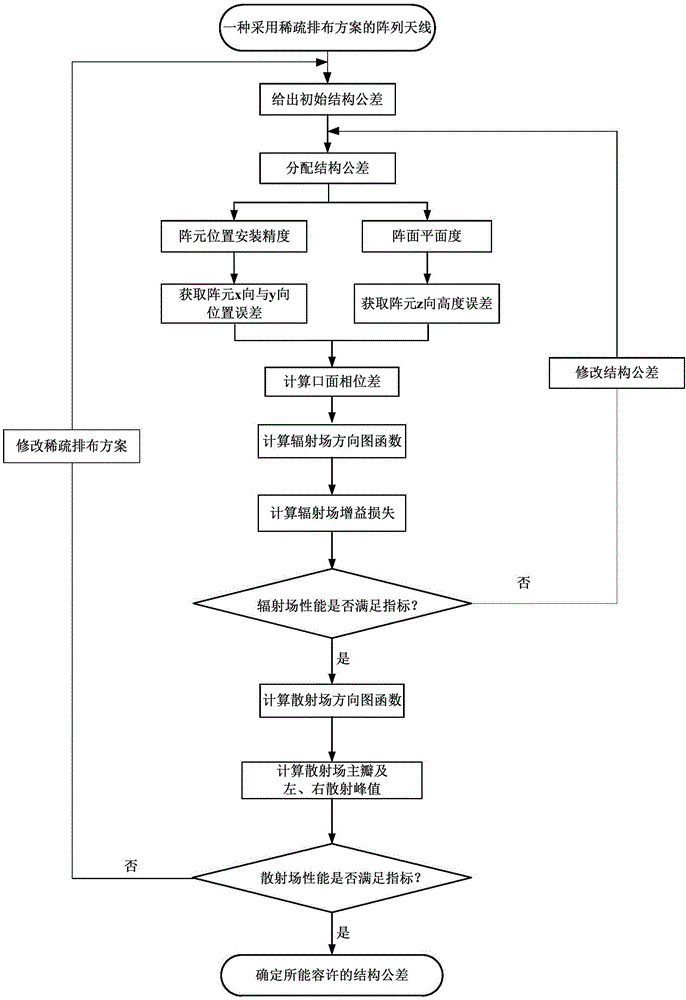Method for determining structure tolerance of sparsely-configured antenna array based on radiation field and scattering field
A technology for array antennas and determination methods, applied in special data processing applications, instruments, electrical digital data processing, etc., can solve problems such as antenna structure tolerance, antenna structure error, difficulty in quickly determining and distributing, etc., to improve accuracy and speed, Good applicability, avoiding the effect of limitations
- Summary
- Abstract
- Description
- Claims
- Application Information
AI Technical Summary
Problems solved by technology
Method used
Image
Examples
Embodiment Construction
[0059] Below in conjunction with accompanying drawing and embodiment the present invention will be further described
[0060] refer to figure 1 , the present invention is a method for determining the structural tolerance of sparsely arranged array antennas oriented to radiation and scattering, and the specific steps are as follows:
[0061] Step 1, determine the structural parameters, electromagnetic parameters and sparse arrangement matrix of the sparsely arranged array antenna.
[0062] 1.1. Determine the structural parameters of the sparsely arranged array antenna, that is, to obtain the number of rows M, the number of columns, and the distance between array elements in the x direction d x and y-element spacing d y , the number of the radiation unit in the array is (m,n), where m and n are the numbers of the radiation unit in the x and y directions respectively, and the lower left corner of the array is the starting number, that is, the radiation at the lower left corner ...
PUM
 Login to View More
Login to View More Abstract
Description
Claims
Application Information
 Login to View More
Login to View More - R&D
- Intellectual Property
- Life Sciences
- Materials
- Tech Scout
- Unparalleled Data Quality
- Higher Quality Content
- 60% Fewer Hallucinations
Browse by: Latest US Patents, China's latest patents, Technical Efficacy Thesaurus, Application Domain, Technology Topic, Popular Technical Reports.
© 2025 PatSnap. All rights reserved.Legal|Privacy policy|Modern Slavery Act Transparency Statement|Sitemap|About US| Contact US: help@patsnap.com



